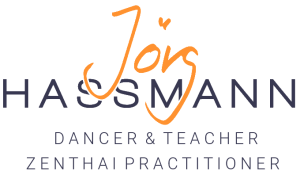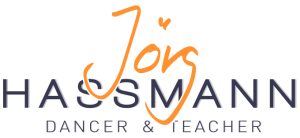Running – How I see it enriching my dance
Lately I got my calf and knee problems under control and now I can run again. I love it! After not being able to run for 7 years and not really practicing for another 15 years this feels amazing. A very basic sense of aliveness rises up in these runnings with a flavour of freedom and capability. It is not so easy to figure out what touches me so deeply. There is nothing super special, it is just running, I can do it or leave it, doesn’t really matter. But what does matter? – from those things that go beyond pure survival … Sometimes I wonder how much effort we put into things and activities, we spend money, buy fancy stuff to make our lives easier and ourselves somehow happier. But in running there is something very pure, there is not much between me and the experience. And I enjoy the experience of running. There are phases of flow and lightness, I am captured by an amazement of what my body is able to do, the incredible complexity and inner connectedness that I can get in touch with when I run. I enjoy the freedom to research, to play with habits, testing movement or postural alternatives without cutting the flow. The ‘improviser’s mind’ in action.
This is very close to dancing. But I wonder if the reason for this surprisingly deep sense of satisfaction is rooted in something else. There is something fundamentally basic and simple about running. In running I re-connect to what we are physically designed for. And underneath this kind of archaic baseline I get a glimpse of the extreme complexity in terms of movement organisation, the result of 6 million years of evolution, developing bipedalism from four-legged locomotion.
I find it very satisfying to have this very basic survival skill back. As the rather popular anthropologist and barefoot runner Daniel Liebermann claims, endurance running was the skill that human beings were better at than any other animal, especially in the heat. So our ancestors chased bigger animals until they collapsed. (Check out the first 20 minute lecture of this youtube clip: https://www.youtube.com/watch?v=YTv5KhUtbx0.)
I am aware that there are many different ways to approach running. And for people, who are not used to running or who feel running is just not what their body wants to do, it is a very different story than for me. As someone, who feels rather clearly ‘I can run’, I am using running partly as a movement research or as a dance technique training. A significant part of dance technique is the ability to sense our body while moving. What we can sense we can work on, appreciate or develop. But the most fundamental movements are very hard to sense. One way to increase the ability to sense what is happening in our moving body is to slow down and to become more detailed. Breaking down the complexity of movements into smaller bits that we can consciously observe. And then we hope that our body-mind system got enough time and space to re-pattern our movement organisation, so that it can serve us also when we move more quickly, beyond the speed that we can consciously control. But unfortunately we can’t slow down running without loosing the essence of it.
Luckily there is also the option to improve our movement technique by repeating movements over and over again, also in a higher speeds. That is an offer of a running practice. Walking and running are maybe the most complex movements that we are able to perform. Just that evolution put a few million years of research into making it feel very simple to us. The whole body is involved in this repetitive movement. By directing my focus on specific body parts or movement principles I can learn a lot. In my teaching I realize more and more how helpful it is to repeat movements – alone and in touch with a partner. I don’t waste energy on deciding what to do next. That frees me to pay attention to details, which in a continuous improvisation would only appear randomly.
What I lately explored in my running quite a lot is the constantly shifting counter spiral between shoulder girdle and pelvis. It provides insights how they communicate through the center. It leads me to sensing multiple elastic connections between lower and upper body, charging my core and releasing the stored energy into the next step. I like wondering what the psoas is doing, how tissues in front of the spine can support the lower back. I enjoy the question, where my center might be or which kind of center I use for what. I can sense fluidity and aligning forces going through my sacrum supporting a strong and flexible spine.
And I fell in love with researching the universe of tone modulation while running. Especially when I am getting a bit tired and my basic tone starts dropping I can observe how a sense of springiness through different parts of my body fades out, especially around my shoulder girdle. I notice how I can save energy by increasing the tone a bit to find the tensegrity based support again.
Hm, it feels bigger than it sounds in my words, why?
In the 10 years our CI training program (with Daniel Werner and me) we always put a huge focus on tone modulation, especially on the floor level, looking for the least necessary effort for moving, while having center and periphery connected in an elastic way and being available for what ever comes. For most people it means to lower the body tone – compared to their usual habits – without collapsing. In the last years though we spend more time in standing or upright positions, bouncing a lot, trying to find the springiness and lightness in the vertical. The body tone needs to be higher than on the floor. Wishing for the healthy reflex-mode to kick in, where we can react quickly to sudden changes in our environment. All the talks about tensegrity fall into these explorations. And in my running explorations around tone modulation I found exactly that! Running can support this experience of effortlessly righting and aligning upwards, a readiness for little jumps, a very quick and easeful responsiveness.
After spending so many years on softening my body I enjoy a practice that asks me to use my muscles to their limits, that gets my breath and heart beat going. I find with a practice like running – especially if it includes up- and & downhill phases, I find a different kind of trust and willingness to go beyond the easy contact impro flow .
There is fantastic discussion around ‘heel or forefoot running’. When asking the question how our ancestors were able to run so well and long with bare feet on non-paved ground, our familiar way of landing with the heel first, doesn’t make much sense. Without soft soles and even grounds I wouldn’t push my heel with the whole body weight on top into the ground, maybe landing on a twig or stone. As much I enjoy the discussion around it I even more enjoy the practical research. When running I can try out various ways how to land with the foot, in order to lower the impact on knees and spine. Getting out of my habits beyond my comfort zone and coming back to what I thought running was supposed to be like …There is definitely more than only fore foot or heel running. And I think I found some answers to my knee problems.
I have to admit that the environment makes quite a difference. In the streets of Berlin I can’t hear an inner calling to get out an run. In areas with access to nature I suddenly feel this urge coming up: ‘I want to run!’ It is similar to entering a great dance space: I feel immediately at home and what to move directly or sink into the world of physical sensations and explorations. The less inviting the frame is the more inner work I have to do to find my inner moving-desires. In my actual city environment running won’t become my daily practice. I guess that it is a reason, why I got so inspired to follow my wife’s desire to have a half year break from city life and move somewhere with easy access to nature.
A last note: Like dancing Contact Improvisation also running is not important or deeply valuable in itself. Finding out what makes me alive and inspired is less about ‘what I do’ but ‘how I do it’. What enables us to dive into an activity, into a focussed way of experiencing what we do? … is maybe the main question.


Comments are closed.